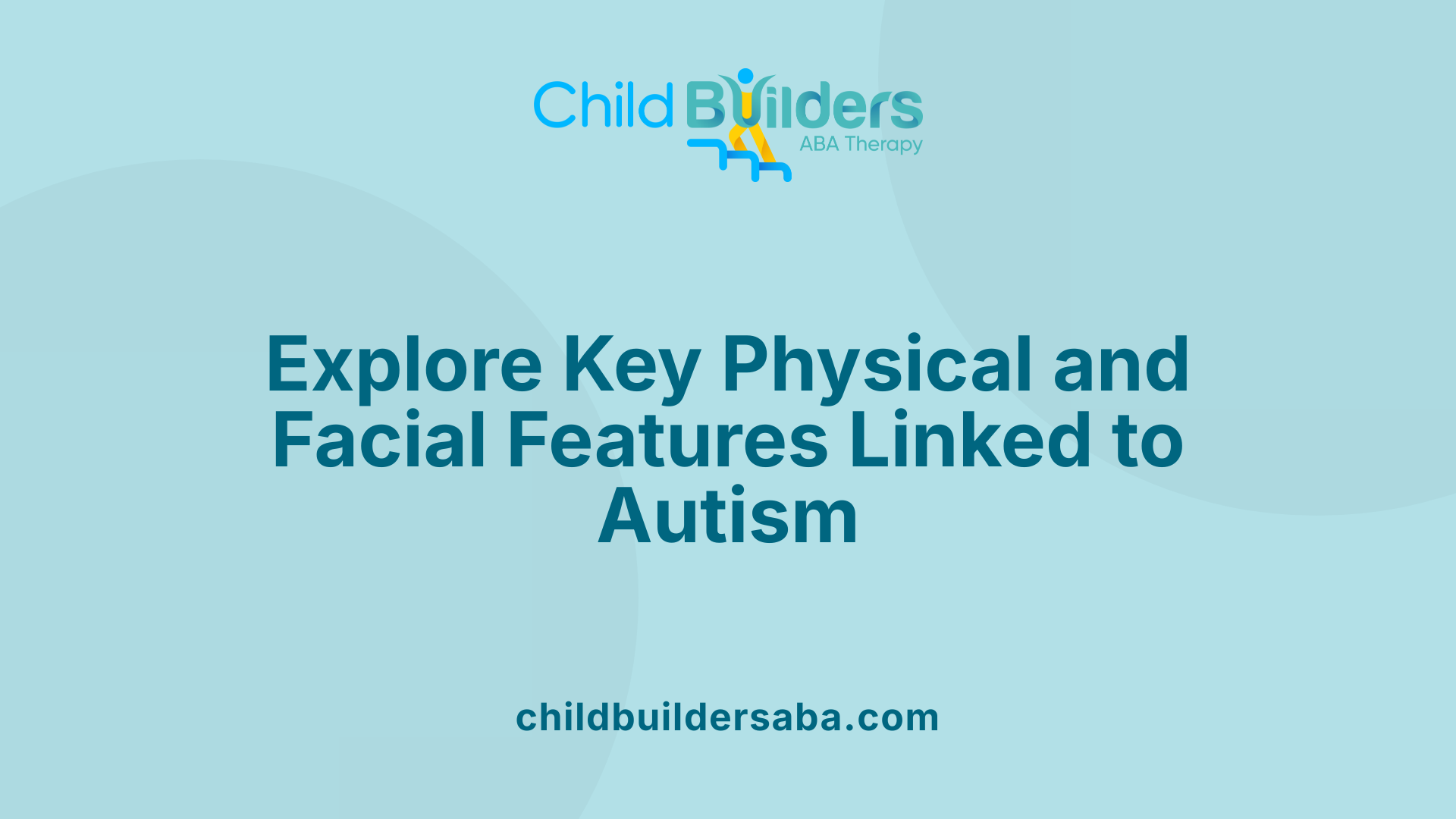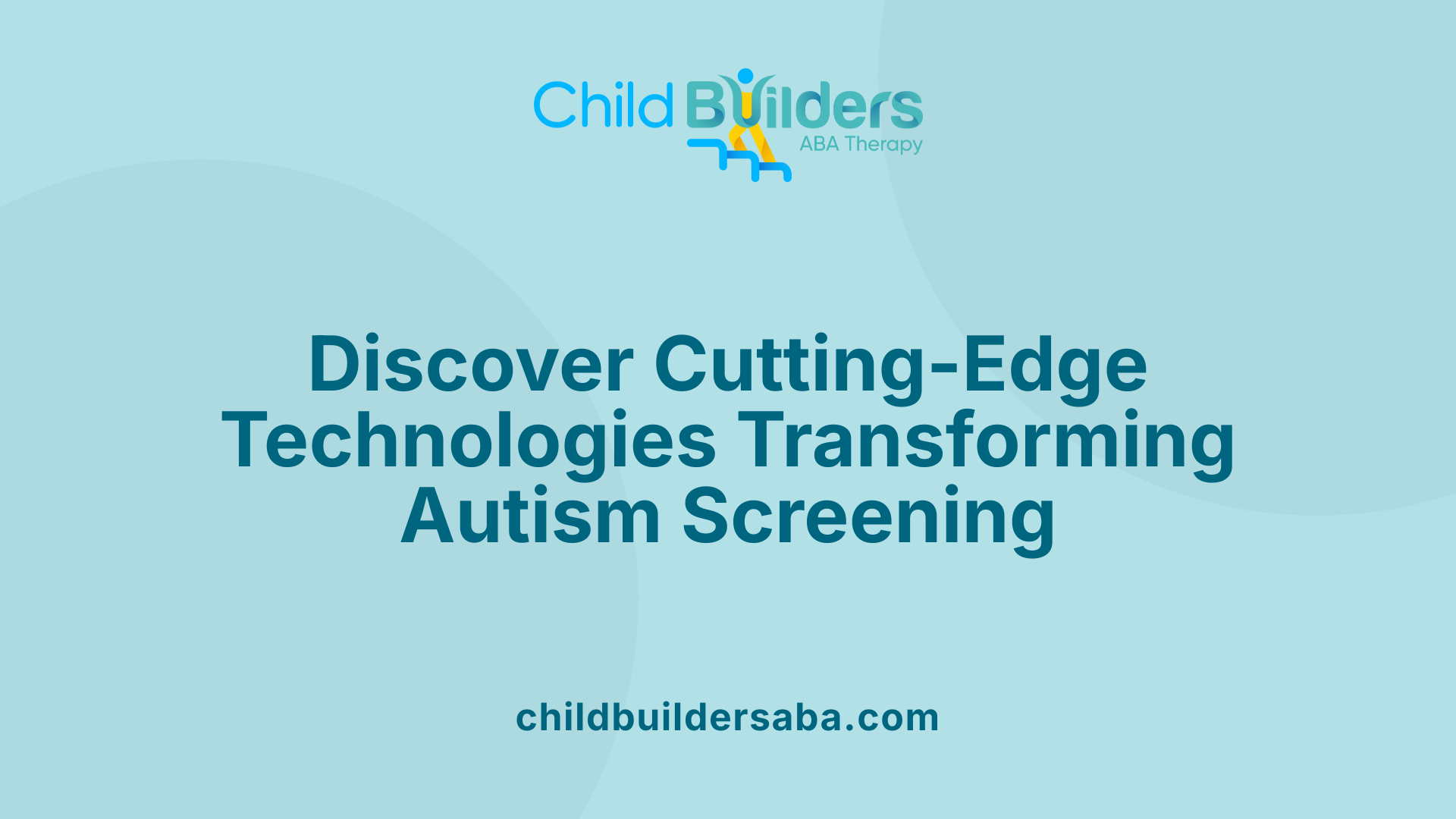Facial Features & Physical Characteristics Of Autism

Understanding the Physical Markers of Autism Spectrum Disorder
While autism spectrum disorder (ASD) is primarily characterized by social, behavioral, and communication differences, emerging research indicates that certain physical features and facial characteristics may also serve as supplementary indicators. These physical traits, though not definitive on their own, provide valuable insights into neurodevelopmental variations and help facilitate earlier detection and diagnosis.
Common Physical and Facial Features in Autism

What are some physical health issues sometimes associated with autism?
People with autism often experience a range of physical health issues that can occur alongside the condition. Common problems include gastrointestinal disorders such as constipation, abdominal pain, and reflux. They are also more prone to metabolic issues like obesity and mitochondrial dysfunction. Neurological conditions such as epilepsy and seizure disorders are more frequently observed in autistic individuals, along with sleep disturbances.
Connective tissue disorders like Ehlers-Danlos Syndrome, sensory processing difficulties, and immune dysregulation are also common. These health issues can lead to autoimmune and inflammatory conditions, emphasizing the need for ongoing medical care and monitoring. Overall, autistic individuals tend to have higher rates of chronic health conditions affecting various organ systems.
Are there physical markers or facial features that can suggest a person has autism?
Research indicates that certain physical markers and facial features are more common among children with autism. Distinct facial characteristics such as a broader upper face, wider-set eyes, a prominent forehead, and facial asymmetry can be associated with neurodevelopmental differences. Physical markers like an enlarged mouth, abnormal philtrum, and irregular hair whorls have been identified as potential indicators.
Advancements in machine learning, including convolutional neural networks (CNNs) and landmark detection models, are showing promising results in early screening efforts. These technologies analyze static facial images to identify patterns linked to autism with high accuracy. However, these markers are not definitive diagnostics on their own, and these features should complement other assessment tools.
What are the common physical and facial features associated with autism spectrum disorder?
Individuals with autism often display certain physical features such as:
- A broader and wider upper face
- Wider-set or large eyes
- A wider or broader mouth
- Facial asymmetry
- A shorter midface, including cheeks and nose
- A prominent forehead
Some research also highlights more masculine physical traits, like a larger head circumference and narrower facial structures. These features can contribute to subtle differences in facial morphology, which typically vary across individuals. In addition to facial features, autistic children may exhibit atypical eye contact, reduced facial expressiveness, and unusual smiling behaviors.
What facial expressions or behaviors are commonly observed in individuals with autism?
People with autism tend to show distinctive facial behaviors. Common traits include limited eye contact and decreased facial expressiveness, which can make social interactions more challenging. They may produce fewer facial expressions overall, and their expressions may be less spontaneous and more subdued.
Some individuals with autism display atypical or ambiguous smiles and laughter, and may find it difficult to mimic facial expressions of others. These differences are influenced by neurodevelopmental factors and often result in challenges with social communication. While they experience emotions similarly to neurotypical individuals, expressing them facially can be less obvious. Advanced technology, like micro-movement analysis, helps to better understand these subtleties.
Is there a specific
Research Methods and Future Perspectives in Facial Analysis for Autism

Use of 3D imaging and digital stereophotogrammetry
Recent advances in digital imaging techniques, such as 3D stereophotogrammetry, have revolutionized how researchers analyze facial features associated with autism. These systems capture detailed three-dimensional images of the face with an accuracy typically in the range of 2-5 millimeters, enabling precise measurement of subtle differences. In a notable study, a 3D facial imaging system called 3DMD was used to analyze 17 specific landmarks on the faces of boys with autism, aged 8 to 12 years. The study discovered significant morphological disparities, including broader upper faces, shorter mid-face regions, wider mouths, and abnormal eye spacing. Such technologies facilitate detailed morphometric data collection, helping to understand how atypical facial development correlates with neurodevelopmental traits.
Advancements in AI and machine learning models
Artificial intelligence (AI) and machine learning are opening new pathways for early autism detection. Convolutional neural networks (CNNs) and landmark detection models are being trained to recognize facial patterns linked to autism. These systems analyze static images and can classify individuals with high accuracy, often ranging between 86% and 95%. For example, specific AI models can detect features like a decreased height of the facial midline or wide-set eyes, which are associated with autism. Researchers are exploring how such technology can supplement traditional diagnosis, especially in settings where behavioral assessments are limited or delayed.
Accuracy rates in facial feature-based autism detection
Using facial features alone, models have demonstrated impressive accuracy rates. When applying criteria such as the presence of six or more common facial variants, the diagnostic accuracy can reach up to 88%. In certain studies, measuring just a few distinctive features, like asymmetrical faces, abnormal hair whorls, and prominent foreheads, helps identify nearly all children with autism with about 96% precision. These promising results suggest potential for early screening tools that employ facial analysis to flag at-risk populations, although they are not intended as standalone diagnostic tests.
Limitations and challenges in facial recognition
Despite the progress, several limitations hinder the widespread clinical application of facial recognition technologies for autism. One challenge is the variability in facial features among individuals with autism, making it difficult to establish a universal facial profile. Additionally, most studies have focused on specific demographics; for instance, small-scale studies involving Caucasian children cannot be generalized to diverse populations without further validation. Technical limitations include the requirement for high-quality images and sophisticated algorithms trained on diverse datasets. Moreover, facial features are influenced by genetic, environmental, and developmental factors, complicating their use as definitive markers.
| Aspect | Details | Challenges |
|---|---|---|
| Imaging Technology | 3D stereophotogrammetry, AI, CNNs | Image quality, data diversity, cost |
| Accuracy of Detection | 86%-95%, with some models reaching 96% | Variability among individuals, demographic characteristics |
| Physical Markers Identified | Broader upper face, wide-set eyes, shorter midface, prominent forehead, wide mouth | Overlap with features in non-autistic individuals, heterogeneity |
| Application Scope | Early screening, supplementary diagnostic tool | Not a replacement for behavioral assessments |
| Future Directions | Expanded datasets, multi-modal approaches, integration with genetic data | Algorithm bias, ethical considerations |
Overall, the integration of advanced imaging and AI models holds great promise for enhancing early autism detection. Continued research aims to improve the accuracy, reliability, and inclusiveness of these technologies, potentially transforming diagnostic practices in neurodevelopmental medicine.
Integrating Physical Characteristics in Autism Diagnosis
While core features of autism are behavioral and developmental, research into physical and facial characteristics enriches our understanding of the spectrum's biological diversity. Recognizing subtle facial differences—such as a broader forehead, wider-set eyes, and a shorter midface—can potentially support earlier detection when combined with traditional assessment methods. Nevertheless, these physical features are not universal nor sufficient for diagnosis on their own, emphasizing the need for comprehensive evaluation that considers behavioral, developmental, and medical factors. Advances in technology, including 3D imaging and AI-based facial analysis, continue to enhance our ability to identify and understand the physical underpinnings of autism, fostering more nuanced and scientifically grounded approaches to diagnosis and support.
References
- Clinical research: Facial features can help diagnose autism
- Is it autism? Facial features that show disorder - CBS News
- Autism Facial Features: Do Physical Signs Exist? - Psych Central
- Understanding Autism Facial Features | Flywheel Centers
- Facial features provide clue to autism severity | The Transmitter
- Autism Facial Features: Do Physical Signs Exist? - Psych Central
- Minor Physical Anomalies in Adults with Autism Spectrum Disorder ...
- Signs of autism in adults - NHS
- Is it autism? Facial features that show disorder - CBS News





































































































